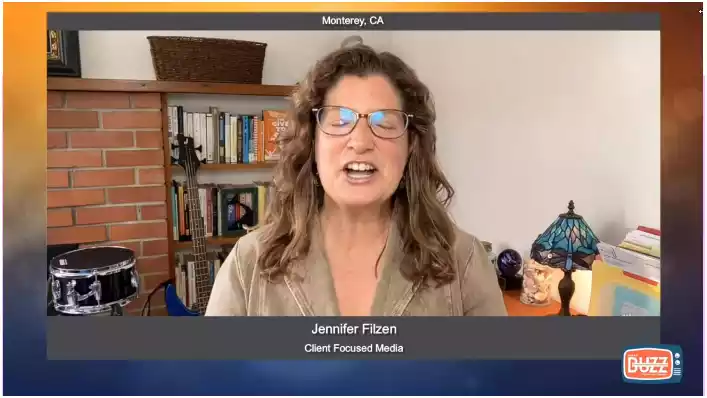Prior Authorization Regulation and Policy Changes: What You Need to Know
Keep up with the latest shifts in prior authorization regulation and policy changes. Find out how these changes could impact your healthcare practice. Read more to stay informed!

Understanding Medicare coverage requirements is crucial. So, does Medicare require prior authorization? Yes, Medicare does require prior authorization for certain services and procedures to ensure they are medically necessary and meet specific criteria. This process helps manage healthcare costs and ensures appropriate use of medical resources. For example, durable medical equipment, home health services, and some outpatient procedures typically require prior authorization under Medicare. This helps to prevent unnecessary treatments and ensures that patients receive the necessary care according to established guidelines.
Let’s start!
Table of Contents
Prior Authorization Regulation and Policy Changes
 In the changing realm of healthcare, there’s a focus on prior authorization, which acts as a crucial checkpoint for patients and healthcare providers to verify the necessity and suitability of specific treatments and medications. As medicine evolves, so do the rules that govern it. This article discusses changes in prior authorization regulations and policies, exploring the detailed reasons behind them and their potential impacts on providers and patients. Whether you’re in healthcare policymaking or navigating the system as a patient, this piece offers insights into the world of prior authorization.
In the changing realm of healthcare, there’s a focus on prior authorization, which acts as a crucial checkpoint for patients and healthcare providers to verify the necessity and suitability of specific treatments and medications. As medicine evolves, so do the rules that govern it. This article discusses changes in prior authorization regulations and policies, exploring the detailed reasons behind them and their potential impacts on providers and patients. Whether you’re in healthcare policymaking or navigating the system as a patient, this piece offers insights into the world of prior authorization.
Looking back at the history of authorization, we see its roots in the 1970s during a period in US healthcare. Initially introduced to control costs by avoiding expenses, it has since undergone significant developments. Advancements in technology have automated authorization processes, streamlining paperwork and enhancing efficiency. However, there have been debates surrounding this issue as critics argue that it may sometimes hinder prompt patient care. As we approach an era in healthcare, the discussion on authorization continues to progress, focusing on striking a balance between cost control, healthcare quality, and patient accessibility.
Historical Importance of Prior Authorization
Origin and Evolution of Prior Authorization
Prior authorization has historically been necessary in managing healthcare expenses. Its introduction encouraged the utilization of resources, safeguarding the financial stability of health insurers. This regulatory process was a gatekeeper that allowed appropriate medical procedures and medications. It was a tool for preventing the use and misuse of healthcare resources that could result in unnecessary spending.
Additionally, the need for authorization indirectly promoted evidence-based practices. Requiring validation for treatments or medications ensured that healthcare providers followed established guidelines and standards. This does not uphold the quality of healthcare services but prioritizes patient safety. Nevertheless, challenges accompanied the implementation of authorization.
Critics have highlighted concerns that it might lead to delays in receiving care in the days before automation when the process was manual, lengthy, and bureaucratic. Balancing the importance of cost management with ensuring patient care has been an issue in prior authorization. Recent shifts in regulations and policies related to authorization have brought about changes to address key challenges within the system. The objective has been to enhance authorization’s efficiency and patient friendliness while upholding its cost control and quality assurance goals.
Significance of Prior Authorization in the Past
One notable change involves emphasizing standardization and automation in the authorization process. Acknowledging the burdens associated with prior authorization for healthcare providers, policymakers have promoted electronic prior authorization (ePA) through regulations. EPA simplifies procedures by leveraging health information technology, reducing paperwork, saving time, and expediting treatment commencement. Additionally, there has been a push towards increased transparency regarding authorization requirements. Insurers are now mandated to outline their criteria for authorization to both healthcare providers and patients.
Practitioners benefit from understanding the importance of treatments and medications while patients gain insights into their healthcare decisions. Moreover, recent regulatory changes have aimed to limit the need for authorization. Specific low-risk treatments and medications for managing diseases are now exempt from prior authorization requirements. This eases the workload on healthcare providers and ensures patient care. Although these changes represent steps, their impact varies significantly. To effectively navigate the changing landscape of authorization, it is essential for all involved parties—including healthcare providers, insurers, and patients—to stay abreast of these shifts and grasp their implications.
Recent Changes in Prior Authorization Regulations and Policies
 Key factors have influenced the changes in authorization regulations and policies. One major driving force is the advancements in health information technology, which have paved the way for automation and standardization. The introduction and adoption of authorization (ePA) systems were primarily driven to reduce manual administrative tasks associated with prior approval, enhance efficiency, and expedite patient care.
Key factors have influenced the changes in authorization regulations and policies. One major driving force is the advancements in health information technology, which have paved the way for automation and standardization. The introduction and adoption of authorization (ePA) systems were primarily driven to reduce manual administrative tasks associated with prior approval, enhance efficiency, and expedite patient care.
Another factor contributing to these changes is the growing acknowledgment of the importance of transparency in healthcare. These changes have resulted in rules that require insurance companies to explain their authorization requirements, giving healthcare providers and patients the information they need to make well-informed choices.
Patient advocacy has also contributed to driving these transformations. Advocacy groups and organizations representing patients have been vocal about the obstacles that prior authorization can create for receiving necessary care, particularly when managing diseases. These concerns have prompted some insurers to limit authorization for low-risk treatments and medications. Despite increasing healthcare costs, authorization’s primary purpose as a cost control measure remains essential. However, there is a growing recognition that this objective must be balanced with the necessity for quality and timely care. As a result, authorization processes have been reassessed and adjusted to preserve their advantages while reducing potential drawbacks. These influencing factors, individually and collectively, have shaped modifications in authorization, signaling a concentrated effort to enhance the process by making it more efficient, transparent, patient-centered, and fair.
I'm very thankful for Portiva who I know is looking after my practice while I'm gone the virtual assistants can manage prescription refills, documents they can triage patients and just kind of answer administrative questions and they can handle a lot on their own. But also, they're very good about contacting me if there's any emergency or anything I need to attend to. So I'm very thankful for Portiva they can help almost any provider almost anywhere and it really allows for some good work-life balance as I'm getting to experience right now at my family farm so I'm very thankful for Portiva and I'm very happy to use their services"

Board Certified Family Medicine Physician

Portiva's Virtual Medical Assistant - I have all the support I need. There's somebody checking my email, any patient messages. Patients are still able to schedule and handle any scheduling issues and any kind of billing that needs to still go through. Portiva hands handles it all for me. I have support i have somebody that I can access 24/7 pretty much. It's all very seamless. If somebody has an emergency or needs a medication called in. I know that the va's at portiva will handle that for me.

Board Certified Family Medicine Physician

Effect of Prior Authorization Changes
 Impact on Healthcare Providers
Impact on Healthcare Providers
Recent adjustments in regulations and policies concerning authorization have impacted how healthcare providers operate and manage their patients. The integration of authorization (ePA) systems has significantly lightened the load on administrative tasks. This allows healthcare providers to speed up the approval process, reducing delays and enhancing the effectiveness of care. Additionally, more precise guidelines on authorization requirements empower healthcare providers to design treatment plans efficiently, reducing the chances of denied claims and unexpected expenses. This enhanced transparency also improves communication among providers, insurers, and patients, fostering decision-making collaboration.
Nevertheless, the narrowed focus on authorization for treatments and medications presents challenges. While it does alleviate some burden, providers need to stay informed about these changes to ensure the application of prior authorization and avoid unnecessary requests. Although these changes aim to enhance the authorization process, it remains a field that requires careful management. Healthcare providers must continually adapt their practices and strategies to take advantage of these changes while upholding standards in patient care.
Impact on Large Hospitals
Hospitals with their patient loads and a wide array of services, encounter unique shifts in prior authorization processes.
Implementing Prior Authorization (ePA) systems has made their workflow more efficient, simplifying tasks and speeding up treatment start times. By standardizing processes, big hospitals can incorporate ePA seamlessly into their existing electronic health record systems, reducing input errors and enhancing productivity.
Another positive outcome is the increased clarity in authorization requirements. Hospitals can better understand insurers’ policies, lowering the number of denied claims. This also empowers hospitals to guide patients on treatment choices, insurance coverage details, and potential out-of-pocket expenses, ultimately boosting patient satisfaction and confidence. Nevertheless, these changes present challenges. Monitoring treatments and medications that don’t require authorization can be demanding due to the varying lists among insurers that require oversight. Additionally, training hospital staff to adapt to these adjustments presents hurdles. Therefore, although the changes in authorization offer advantages, large hospitals need to invest in systems and continuous staff training to navigate this changing landscape while upholding high-quality patient care.
Impact on Small Clinics
Clinics may be smaller than hospitals, but they are significantly impacted by shifts in prior authorization procedures.
Introducing authorization (ePA) systems offers practical advantages, such as reducing paperwork and processing time. This can dramatically benefit healthcare facilities, enabling them to allocate resources and prioritize patient care. The enhanced clarity in authorization requirements simplifies the process for clinics. They can navigate insurance policies effectively by providing guidelines, leading to fewer claim denials. This transparency also enables clinics to communicate costs with patients accurately, fostering trust and improving patient satisfaction.
Nevertheless, there are challenges to consider. Transitioning from manual to systems may involve a learning curve and the need for investments in technology upgrades. Additionally, keeping up with evolving treatment options and medications exempt from authorization can be demanding, especially with limited administrative support. Small clinics have much to gain from changes in authorization procedures. They must be ready to invest in training and technology to capitalize on these advantages fully. The primary goal should always be clear: providing high-quality patient care promptly and efficiently.
Patient Perspectives
From the viewpoint of patients alterations, in authorization processes bring both negative aspects into play. On a note, implementing prior authorization (ePA) systems and their increased transparency enable patients to better understand their treatment plans and associated expenses. This transparency can alleviate worries and foster trust in healthcare providers. Moreover, the decrease in workload can lead to treatment initiation, enhancing the overall patient journey.
However, challenges persist. The intricacies of determining which treatments and medications require prior authorization may seem overwhelming for patients. Furthermore, transitioning to systems, while advantageous in some ways, may present hurdles for individuals who need to become more adept with technology. Despite these obstacles, the modifications to authorization are geared toward enhancing patient-focused care. Ongoing education and improvements to the EPA system can help address these challenges and ensure that patients fully reap the benefits of these changes. The primary objective remains to deliver high-quality care in a patient manner that respects each person’s healthcare needs and personal circumstances.
In summary

he ongoing alterations to authorization rules and regulations have far-reaching implications for various healthcare stakeholders, including major hospitals, small clinics, and patients. While the implementation of Prior Authorization (ePA) systems and the increased clarity in requirements have been a step, they also bring challenges that must be tackled. Healthcare providers need help keeping pace with the changing list of treatments and medications that do not require authorization, providing staff training, and making necessary technological investments. On the other hand, patients may find it overwhelming to grasp the intricacies of these changes and adjust to systems. Nevertheless, these reforms aim to improve patient-focused care and enhance the healthcare experience. It is crucial to continue refining the system, addressing obstacles, and promoting education among all stakeholders. The journey towards an efficient and streamlined prior authorization process is already underway, and with enhancements, it can significantly reshape the healthcare landscape.
To learn more about specialist referral that can enhance your medical practice. Discover more about Portiva and unlock a world of possibilities by visiting our homepage today!
- Streamlining your practice with prior authorization services
- Prior authorization and insurance requirements
- Maintaining preapproval to improve patient care
- How prior authorization affects the patient experience
- Financial and human costs of prior authorization in healthcare
- Role of prior authorization support services
- Medical billing and preauthorization
- Economic importance of precertification in patient care
- Collaborative healthcare in prior authorization
- Patient-focused approaches in pre-approval
- Prior authorization and provider-patient relationship
- Empowering in-house staff with outsourced prior authorization
- Improving patient satisfaction with preapproval technology
- Expanding your practice with precertification services
- Managing patient cases with prior authorization services
- Reducing costs by outsourcing preauthorization
- Securing prior authorization processes
- Data privacy concerns in outsourcing preauthorization
- Outsourcing prior authorization for better efficiency

